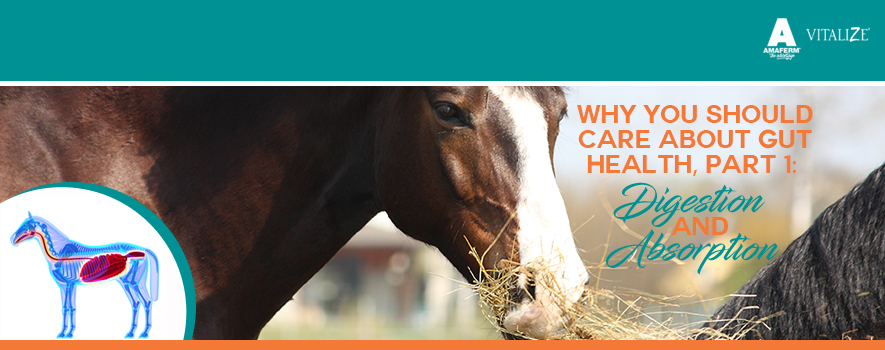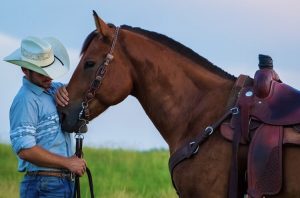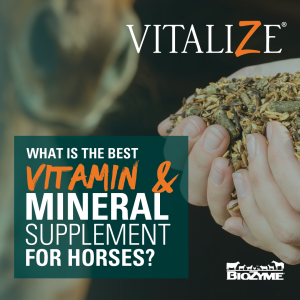
Gut health has bearings on many aspects of equine wellness. The most intuitive, of course, is digestion and absorption of feeds. Proper digestion is important in the horse for many reasons. First and foremost, many horse owners worry or struggle with colic or digestive upset. Second, digestion and absorption of nutrients is important to fuel physiological processes and maintain good body condition, allowing your horse to perform to the best of his or her ability. But what is gut health and how exactly does it impact digestion and absorption?
Gut health refers to the collective viability of the gastrointestinal tract. In horses, the main parts of the gut to consider are the foregut (stomach and small intestine) and the hindgut (cecum and colon). The foregut is primarily responsible for the digestion and absorption of protein, fat, and simple carbohydrates like starch and sugar. The hindgut is primarily responsible for the digestion and absorption of fiber and complex carbohydrates like those found in forage.
The digestion of protein, fat, and sugar is usually relatively easy for the horse while the digestion of starch and fiber is more difficult because they are more structurally complex. Good gut health is very important to making sure these processes go smoothly. In the foregut, good gut health means maintaining a correct and steady pH, maintaining the integrity of the gut lining, and maintaining the activity of the various cells that live there. Proper pH activates digestive juice and enzymes necessary to help break down feed. It is also important in maintaining the integrity of the stomach lining, as too acidic pH can lead to ulcers. Maintaining the integrity of the gut lining and the cells that reside there is also very important to facilitate absorption of digested feedstuff. Let’s face it, without adequate absorption, improved digestion is rather invaluable.
In the hindgut, good gut health means maintaining a stable and correct population of microbes, which help ensure other aspects of good gut health in the hindgut like a balanced pH. The difficult digestion of complex carbohydrates in the hindgut depends heavily on these microbes, which are able to break down fiber from feeds and forages into a usable form of nutrients for the horse. Not only does that process release nutrients for absorption, it also releases a very important form of energy for the horse called volatile fatty acids. Volatile fatty acids provide a cool source of energy for the horse and account for a significant portion of the overall energy used. Volatile fatty acids are a direct product of the fiber fermentation and digestion carried out by the microbes. However, only when the gut is healthy will the good microbes flourish and execute these jobs most effectively and efficiently.
To support good gut health, there are several important practices to abide by. These include allowing access to good quality forage often, avoiding large feedings of grain and starch, and supplying a prebiotic like Amaferm to ensure a healthy gut. Amaferm is research proven in horses to improve the digestion and absorption of protein, fat, and fiber and is available in the entire line of Vitalize products. The chart below summarizes research that revealed less protein, fat, fiber, and ash in the feces of horses fed Amaferm daily compared to controls. This indicates greater digestion and absorption of nutrients.


